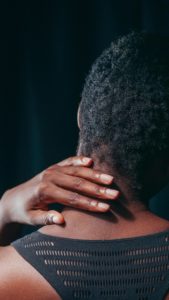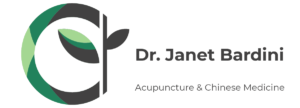
Oriental Medicine, A Publication of Pacific College of Oriental Medicine – SPRING 2008
The Use of Acupuncture for Fibromyalgia, Female age 56
By Janet Bardini, M.S., L.Ac., Dipl.Ac.
Fibromyalgia is a chronic pain illness affecting approximately 3-6% of the U.S. population, with a higher percentage being women of all ages and races. It is characterized by widespread musculoskeletal aches, pain, and stiffness that comes and goes with varying intensity. Other signs and symptoms include soft tissue tenderness, fatigue and sleeping disorders. Currently there are no lab tests available for diagnosing FM.
An exam based on the standardized American College of Rheumatology (ACR) is performed by a medical doctor to determine the presence of multiple tender points at characteristic locations. To receive an FM diagnosis, the patients must have: 1) widespread pain in all four quadrants of the body for a minimum duration of three months; 2) tenderness or pain in at least 11 of the 18 specified tender points when pressure is applied.
The causes of fibromyalgia remain unknown. Research shows that FM may be a disorder of central processing – pain being caused by abnormal sensory processing in the CNS. Other scientific studies on FM patients have shown increased levels of substance P in the spinal cord, limited blood flow to the thalamus region, hypo function of the HPA axis, low levels of the hormones serotonin and tryptophan, and abnormal cytokine function. More recent studies have found that there may be a genetic predisposition to FM.
Conventional medicine treats FM with over-the-counter pain medications (acetaminophen, ibuprofen). Non-narcotic pain relievers such a tramadol may also be prescribed. If the patient is depressed, tricyclic antidepressants or serotonin reuptake inhibitors may also be prescribed.
Lidocaine injections at the tender points are another modality used to relieve pain. However, alternative treatments such as acupuncture are beginning to play an important role in the treatment of FM.
Case Study
In October of 2005, a 56-year-old married Caucasian female presented in my clinic with fibromyalgia diagnosed by her primary care physician. Lab tests had ruled out lupus and rheumatoid arthritis. She described her pain as a consistent heavy burning feeling which was not made better by movement, rest, or temperature variation. She is unable to walk for long periods of time – for example, she becomes exhausted by a simple walk from the car into the store. On a scale of 1-10, 1 being no pain and 10 being the worst pain, she rates her pain at 10. Her energy level is rated at 1, on a scale of 1-10 where 1 is the lowest level of energy and 10 is the greatest level of energy. She is unable to function during the day unless she takes naps.
Her responses to the 1O questions were the following:
- Body Temperature: in menopause, has hot flashes, but is cold in the winter
- Abnormal sweating: none
- Thirst: none, forces herself to drink, likes ice drinks in summer and hot drinks in the winter
- Bowel movement: every other day, not difficult to evacuate
- Urination: every 2 hours, color of urine is bright yellow
- Appetite and Digestion: unremarkable
- Sleep: affected by her dogs waking her up. Wakes up unrefreshed. Not difficult to fall asleep
- Eyes/ears/nose /throat: unremarkable
- Energy: low
- Emotions: stressed from taking care of children (age 21 and 11). Daughters have various health problems.
Ob/Gyn: in menopause for three years. Upon physical examination of the patient, I found many tender spots, including those at the following locations: Gallbladder 21, Lung 1, Large Intestine 11, Liver 8, Bladder 10, Small Intestine 13, and Spleen 6.
Her pulse rate is at 60 BPM, with the right side being more choppy and wiry, and the left side being thready and thin. Her pulse at the chi position is faint and deep.
Upon tongue examination, the body is pale and swollen with tooth marks on the sides. The sides and the tip are also red. The coat is thin, white and slightly greasy. There is a crack down the middle of the tongue.
In Chinese medicine terms, I diagnosed her with Bi Syndrome due accumulation of Wind Cold Damp, with Qi and Blood stagnation, and Kidney Yin deficiency. My treatment principle is to expel damp, move Qi and blood to relieve pain, and tonify Kidney yin.
My prescription plan was borrowed and modified from a protocol by the late Dr. Yitian Ni from her book Navigating the Channels of Traditional Chinese Medicine (Complementary Medicine Press, San Diego 1996).
The points used were: Yintang, Small Intestine 3, Bladder 62, Gallbladder 21, Spleen 21, Liver 8, Stomach 36, and Spleen 6 needled with even supplementation. The patient was unable to lie down, so I treated her sitting down in a comfortable chair for 15 minutes.
Analysis
According to channel pathology from the Chinese Medicine classic book, the Nei Jing, the Bladder channel dominates the disorders of the tendons and ligaments, while according to Zang/Fu theory, it is the Liver that controls them. Clinically, both channels are used to treat these disorders, with the Bladder channel mainly used to treat Bi syndrome and the Liver channel to treat muscle tightness from nervous tension.
When Bladder 62 is paired with Small Intestines, the practitioner is now accessing the pathway of one of the Eight Extraordinary channels, the Du Mai. Du means governing or dominating; the Du Channel governs all the Yang channels and is called the Sea of Yang Qi. This function allows the Yang Qi to warm all the organs and channels to promote Qi and blood flow. The Du channel also connects with the brain and spinal cord to treat the nervous system.
Spleen 21 (Da Bao – Great Embracement) is the Major Luo Collateral of the Spleen Channel and is an acupuncture point that affects the entire body because it connects with all of the Luo collaterals of the 12· primary acupuncture meridians. The function of the Luo collaterals is to reinforce the connection between the primary and extraordinary channels. When you access this point, you are activating Qi and blood flow throughout all 12 primary channels. According to Dr. Ni, combining Spleen 21 with Liver 8 treats whole body pain and also nourishes and lubricates the tendons and muscles.
Yintang (Hall of Impression), which is a non-channel point located midway between the medial ends of the eyebrows, calms the nervous system to relieve pain. The modifications I used on this protocol were the following:
Stomach 36 (Zu· San Li)- to course wind and· transform damp, free and regulate Qi and blood of the channels, relieves pain and strengthens immunity
Spleen 6 – (San Yin Jiao) called “Three Yin intersection” because it is the meeting place of the three yin channels: Spleen, Liver and Kidney. I like to use this point for women’s health issues because the three yin channels connect to the Rem Mai, another extraordinary channel connecting to the reproduction system. It is effective in treating menopausal symptoms such as hot flashes, night sweats, and insomnia. This point also frees Qi and blood stagnation and dispels wind damp from the channels and relieves pain.
Gallbladder 21 – (Jian Jing)- indicated to spread Qi along the gallbladder channel and to relieve muscle tension.
The patient received acupuncture treatments twice a week for approximately three months. After the first month of treatment, the patient reported a significant reduction in her heavy burning pain, from a 10 down to a 4 on the-1-10 scale. Around the holidays in December, she was able to shop; walk and attend functions without having to take naps during the day and would not feel exhausted after physical activity. After three months, l re-evaluated her pain and energy scale. The patient reported that her pain was reduced to 1 and her energy level varied from 8-10.
Her sleep improved and emotionally she felt more balanced. Her hot flashes decreased. She no longer took naps during the day. She continues to come in once a week for treatment and has maintained living a mostly pain-free lifestyle with the help of acupuncture treatments.
JANET BARDINI received her Bachelor of Arts from Fordham University, New York and her Master of Science in Acupuncture from the Pacific College of Oriental Medicine, New York. She is licensed in New York and Connecticut, and is a Board-Certified Diplomate in Acupuncture though the National Certification Commission for Acupuncture and Oriental Medicine (NCCAOM). Her studies of Oriental Medicine have taken her to China, where she studied in various hospitals and clinics in Beijing. She is also an Usui Reiki Master. She practices in New York City and White Plains, New York.
